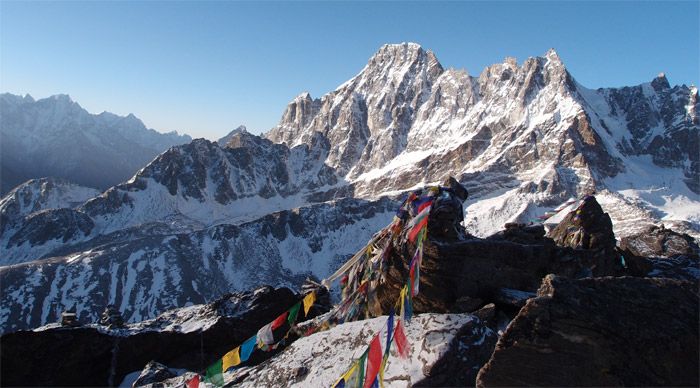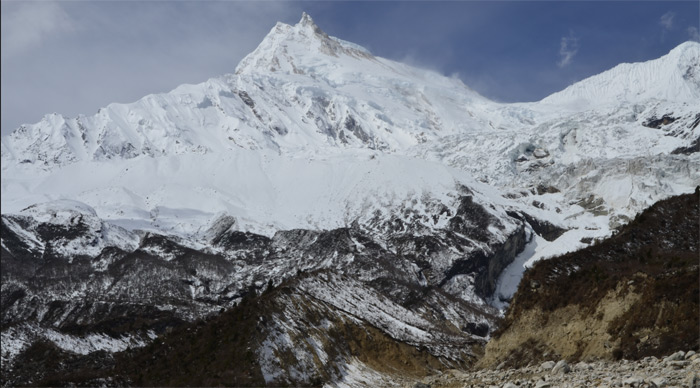With its cold, fresh environment, untouched mountains and unique wildlife, Nepal offers great trekking experiences for backpackers looking for an adventure, a test of their endurance, and a chance to witness nature at its best.
You’ll find no shortage of treks here, which are diverse and can suit the temperament of all kinds of trekkers, from wildlife and nature buffs to fitness enthusiasts as well as complete newcomers. The hospitality of the natives along with a flexible and low-cost opportunity to witness the largest and most secluded mountain ranges in the world up close is bound to be a great experience.
The weather in Nepal remains dry and warm enough for trekking from March to June and from September till November. The torrential rains that start around June, and severe winters, may cause the passes to close and make the trek much more challenging. Make sure you know how to acclimatize when trekking along the higher altitude paths, and that you keep camping supplies, food and appropriate gear when opting for a remote trek that requires self-sufficiency.
Everest Base Camp 3 Passes Trek (18-22 days)

As the name suggests, you reach the Mount Everest Base Camp and also cross the three passes, Kongma La (5,535m), Cho La (5,380m), and Renjo La (5,388m). While many tourists choose to do the Everest Base Camp trek, the 3 passes trek is less frequented, allowing for tranquility amidst nature.
The EBC 3 Passes trek is an adventure trek and you are bound to remember the great mountains and glaciers you will be seeing on this fantastic trek. Around 2 to 3 days will be spent acclimatizing, since the changes in surrounding temperature and air pressure may affect some trekkers more than others. It is not uncommon for altitude sickness to force some parties to abort the trek. However, most people complete and really enjoy the trek as long as acclimatization is done properly.
The natives, or Sherpas, are friendly and are known for their helpfulness and fluent English, so if you’re traveling without a guide, just ask a local for directions in case you are lost. We would though recommend to have a guide, as it will surely increase your safety a great deal.
The mountain ranges that you’ll see on this trek are some of the highest and most undisturbed in the world. The circuit starts and ends at Namche Bazaar, which is the unofficial capital of the region and has much to offer in the way of handicrafts, food, shopping and places to stay. You can decide to bring porters for carrying your bags and guides for helping you learn more about the sites, although it is perfectly possible to get by on your own. However, in case of altitude sickness, these helpers can prove invaluable, since it is unwise for badly affected trekkers to abort the trek and return alone.
The region of Khumbu is very safe and open to tourists from all corners of the world. This is a teahouse trek, so you can usually find a place to stay for the night. The prices are quite low, but can increase as the trek progresses into more remote and higher areas, so have a good amount of currency at hand. As always, always exercise your best judgment when it comes to safety and hygiene. Keep all valuables on your person and clean water with disinfectant tablets before drinking it. Yaks are common and are known to push people off paths, so in case you encounter them, stand on the upper slope of the path to let them pass. This way, even if they push you, the slope will prevent your fall.
Manaslu Trek(15 days)

This is a highly popular circuit that is also known as the New Annapurna Circuit since it exceeds the popularity of the original. At 8,156m, Mt. Manaslu is the 8th tallest mountain in the world, and the trek encircles this natural wonder, which lies in Nepal’s Gorkha district. The unhindered view of the majestic Mt. Manaslu only complements the pristine flora and fauna, nerve-wracking footbridge crossings and watching local religious and cultural places and practices. Don’t be misled by the tree-covered slopes and lower temperatures – with no roads, the Manaslu trek is just as difficult and conducive to altitude sickness as the Everest Base Camp trek (or the original Annapurna Circuit). The highest place you’ll encounter during the trek is the snow-clad Larkya La pass (5,135 m). You’ll need to be in good physical condition if you want to enjoy the best trekking circuit in Nepal.
The Manaslu trek grew in popularity after some teahouses opened up along the trail in 2010, before which trekkers had to camp at night. The Nepali authorities have attempted to promote the tourism and trekking activities in the area in a sustainable and environmentally friendly manner, and only groups of two or more of trekkers accompanied by a registered trekking guide can be issued a trekking permit by a registered trekking agency. You cannot travel without this permit.
The trek starts at Gorkha or Arughat, and ends at Besissahar. Additionally, if you’ve got five days to spare and would like some rest along with some cultural insight, you can travel to the Tsum Valley, which is east of the path and has a Tibetan Buddhist monastery where you can stay for a night. It can get very cold, windy and slippery at the Larky Pass, so carry light crampons and suitable clothing for a hassle-free trek.
Ghorepani Poonhill Trek (4-7 days)

If a shorter, easier trek that goes through rainforests and villages is what you have in mind, then try this one. Open throughout the year, except in monsoon season, the trek requires no special climbing gear or precautions for altitude sickness, and you’ll get to see some great mountains like Annapurna and Dhaulagiri too! It is a highly popular trek due to its low traffic, difficulty and price.
The Ghorepani Poonhill Trek usually starts at Nayapul, from where you’ll travel to Ghorepani after crossing the ModhiKhola River. Although cold temperatures with rain and snow are common here, Ghorepani is heavily forested, which makes for amazingly vibrant scenes when the rhododendron trees are in full bloom. Rhododendron is Nepal’s national flower. From here, you’ll go to Poon Hill, where you can witness mountains and many scenic views. At night, you will be stopping at teahouses in villages where you will be served delightful local dishes and tea along with lodging.
Nepal is one of the world’s most popular destinations for backpackers and adventure-loving tourists due to its scenic environment, towering mountain ranges, friendly and honest Sherpas, and excellent value for money. If you want an unforgettable journey in an unspoiled land, one that is challenging yet as safe as it could be, begin planning your trek now!
